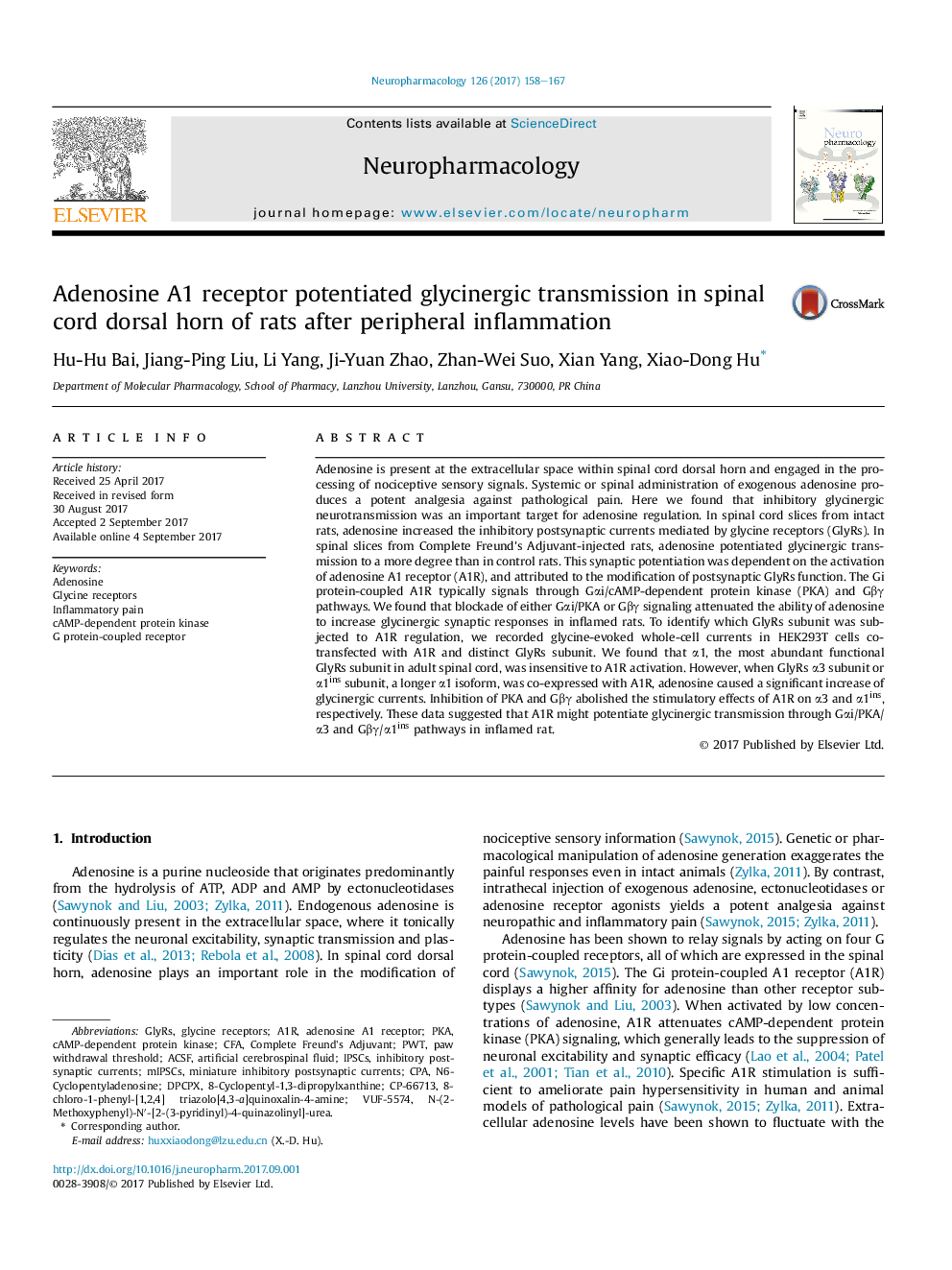| کد مقاله | کد نشریه | سال انتشار | مقاله انگلیسی | نسخه تمام متن |
|---|---|---|---|---|
| 5548714 | 1556591 | 2017 | 10 صفحه PDF | دانلود رایگان |

- Adenosine boosted glycinergic transmission in spinal dorsal horn of inflamed rats.
- The potentiation of glycinergic transmission depended on postsynaptic A1R.
- A1R, via Gαi/PKA pathway, enhanced the currents mediated by GlyRs α3 subunit.
- Gβγ was required for A1R to increase GlyRs α1ins subunit-mediated currents.
Adenosine is present at the extracellular space within spinal cord dorsal horn and engaged in the processing of nociceptive sensory signals. Systemic or spinal administration of exogenous adenosine produces a potent analgesia against pathological pain. Here we found that inhibitory glycinergic neurotransmission was an important target for adenosine regulation. In spinal cord slices from intact rats, adenosine increased the inhibitory postsynaptic currents mediated by glycine receptors (GlyRs). In spinal slices from Complete Freund's Adjuvant-injected rats, adenosine potentiated glycinergic transmission to a more degree than in control rats. This synaptic potentiation was dependent on the activation of adenosine A1 receptor (A1R), and attributed to the modification of postsynaptic GlyRs function. The Gi protein-coupled A1R typically signals through Gαi/cAMP-dependent protein kinase (PKA) and Gβγ pathways. We found that blockade of either Gαi/PKA or Gβγ signaling attenuated the ability of adenosine to increase glycinergic synaptic responses in inflamed rats. To identify which GlyRs subunit was subjected to A1R regulation, we recorded glycine-evoked whole-cell currents in HEK293T cells co-transfected with A1R and distinct GlyRs subunit. We found that α1, the most abundant functional GlyRs subunit in adult spinal cord, was insensitive to A1R activation. However, when GlyRs α3 subunit or α1ins subunit, a longer α1 isoform, was co-expressed with A1R, adenosine caused a significant increase of glycinergic currents. Inhibition of PKA and Gβγ abolished the stimulatory effects of A1R on α3 and α1ins, respectively. These data suggested that A1R might potentiate glycinergic transmission through Gαi/PKA/α3 and Gβγ/α1ins pathways in inflamed rat.
Journal: Neuropharmacology - Volume 126, November 2017, Pages 158-167